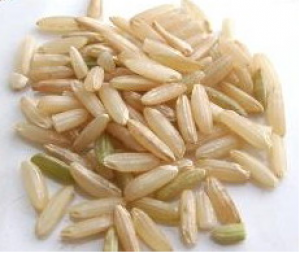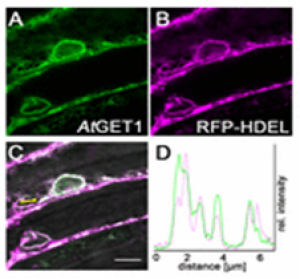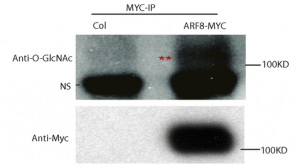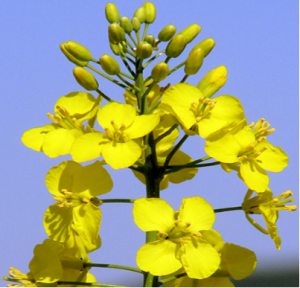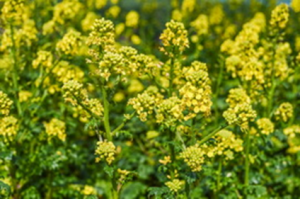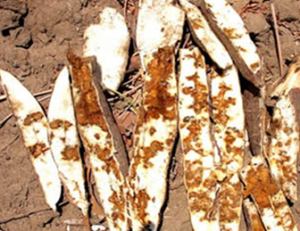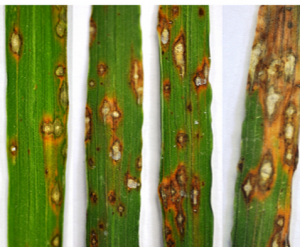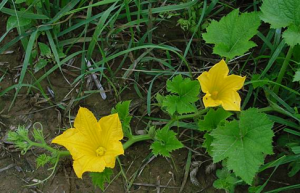Plant secondary cell walls constitute the majority of plant biomass. They are predominantly found in xylem cells, which are derived from vascular initials during vascularization. Little is known about these processes in grass species despite their emerging importance as biomass feedstocks. The targeted biofuel crop Sorghum bicolor has a sequenced and well-annotated genome, making it an ideal monocot model for addressing vascularization and biomass deposition.
Phosphorus is an important nutrient for crop productivity. More than 60% of the total phosphorus in cereal crops is finally allocated into the grains and is therefore removed at harvest. This removal accounts for 85% of the phosphorus fertilizers applied to the field each year 1, 2. However, because humans and non-ruminants such as poultry, swine and fish cannot digest phytate, the major form of phosphorus in the grains, the excreted phosphorus causes eutrophication of waterways.
Root hairs are unicellular extensions of the rhizodermis, providing anchorage and an increase in surface area for nutrient and water uptake. Their fast, tip-focused growth showcases root hairs as an excellent genetic model to study physiological and developmental processes on the cellular level. We uncovered a root hair phenotype that is dependent on putative Arabidopsis orthologs of the Guided Entry of Tail-anchored (TA) proteins (GET) pathway
Studies in mammalian systems have shown important functions of O-linked N-acetylglucosamine (O-GlcNAc) modification of proteins (O-GlcNAcylation) in a wide range of cellular, physiological, and disease processes. Genetic evidence indicates that O-GlcNAcylation is essential for plant growth and development. However, very few O-GlcNAc–modified proteins have been identified in plants.
The Brassica genus comprises many economically important worldwide cultivated crops. The well-established model of the Brassica genus, U's triangle, consists of three basic diploid plant species (Brassica rapa, Brassica oleracea, and Brassica nigra) and three amphidiploid species (Brassica napus, Brassica juncea, and Brassica carinata) that arose through interspecific hybridizations. Despite being extensively studied because of its commercial relevance, several aspects of the origin of the Brassica species and the relationships within and among these six species still remain open questions.
Natural rubber (NR) is an important raw material for a large number of industrial products. The primary source of NR is the rubber tree Hevea brasiliensis, but increased worldwide demand means that alternative sustainable sources are urgently required. The Russian dandelion (Taraxacum koksaghyz Rodin) is such an alternative because large amounts of NR are produced in its root system. However, rubber biosynthesis must be improved to develop T. koksaghyz into a commercially feasible crop.
Breeding technologies, whether conventional or modern, have been often used to enhance crop production. However, these breeding methods are sometimes laborious and complicated, especially when attempting to improve desired traits without inducing pleiotropic effects. Targeted genome editing (TGE) technology using engineered nucleases, including meganucleases, zinc finger nucleases (ZFNs), transcription activator-like effector nucleases (TALENs), and clustered regularly interspaced short palindromic repeat (CRISPR) has been used to improve the traits of economically important plants.
Cassava brown streak disease (CBSD) presents a serious threat to cassava production in East and Central Africa. Currently, no cultivars with high levels of resistance to CBSD are available to farmers. Transgenic RNAi technology was employed to combat CBSD by fusing coat protein (CP) sequences from Ugandan cassava brown streak virus (UCBSV) and Cassava brown streak virus (CBSV) to create an inverted repeat construct (p5001) driven by the constitutive Cassava vein mosaic virus promoter.
Avirulence genes in Magnaporthe oryzae, the fungal pathogen that causes the devastating rice blast disease, have been documented to be major targets subject to mutations to avoid recognition by resistance (R) genes. In this study, an avirulence (AVR) gene-based diagnosis tool for determining the virulence spectrum of a rice blast pathogen population was developed and validated. A set of 77 single-spore field isolates was subjected to pathotype analysis using differential lines each containing a single R gene and classified into 20 virulent pathotypes except for four isolates that lost pathogenicity.
The dwarf or compact plant architecture is an important trait in plant breeding. A number of genes controlling plant height have been cloned and functionally characterized which often involve in biosynthesis or signaling of plant hormones such as brassinosteroids (BRs). No genes for plant height or vine length have been cloned in cucurbit crops (family Cucurbitaceae).


 Curently online :
Curently online :
 Total visitors :
Total visitors :

